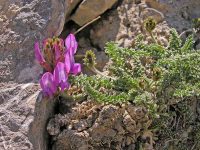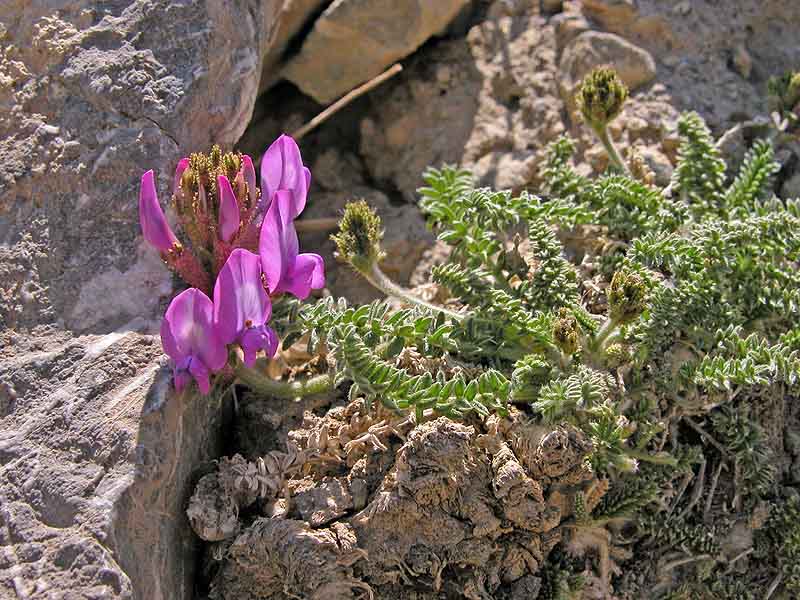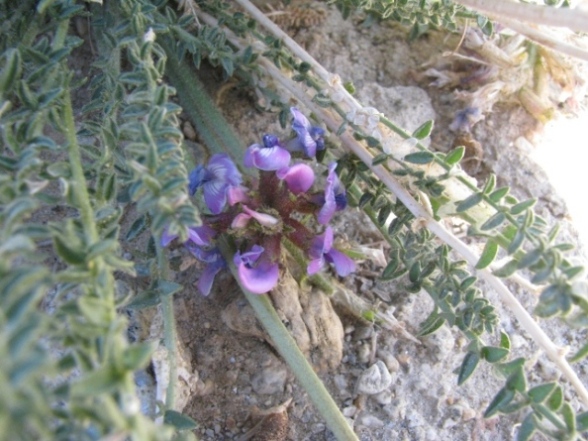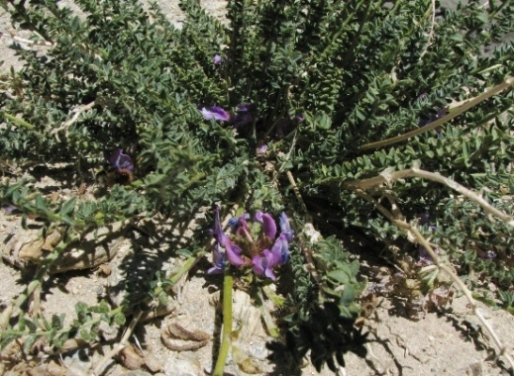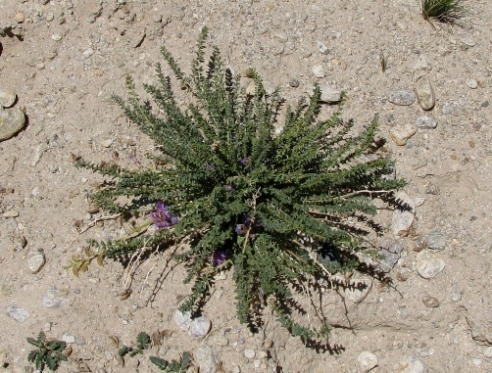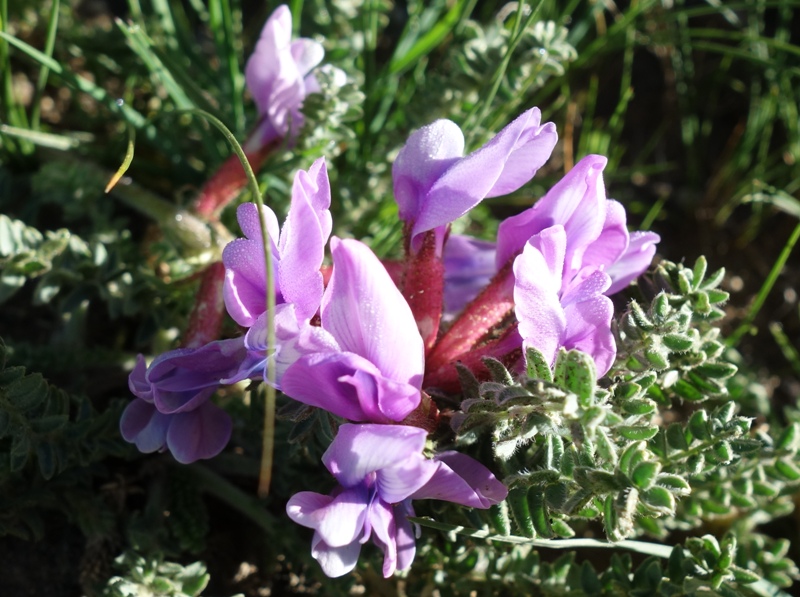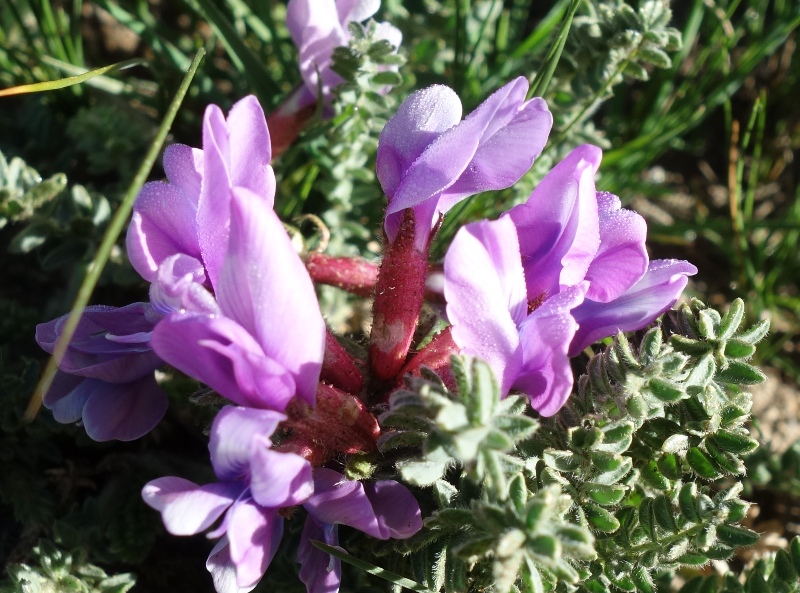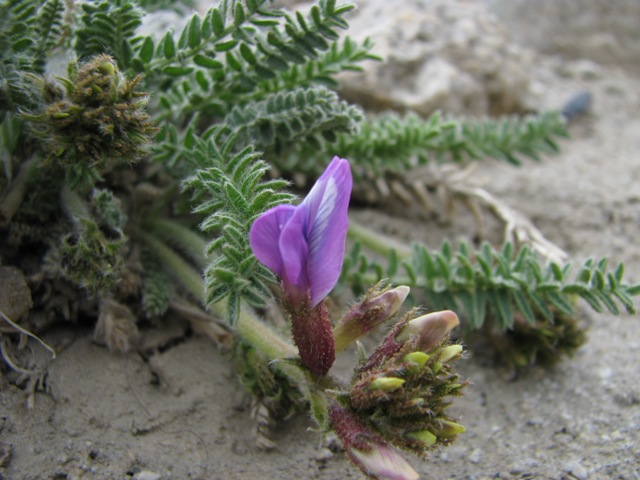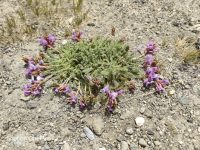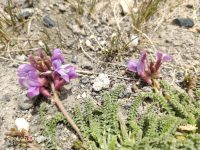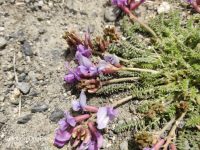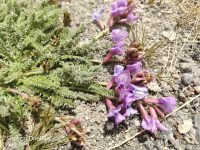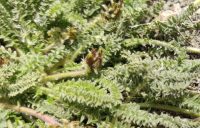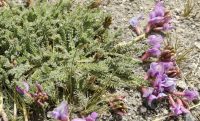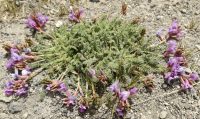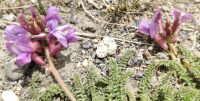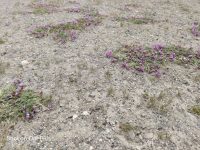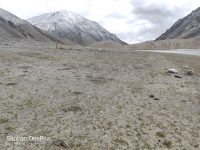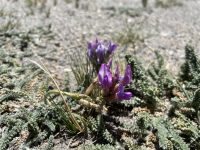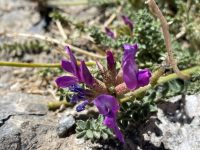|
Oxytropis microphylla (Pall.) DC. (Syn. Astragalus microphyllus (Pall.) Pall.; Oxytropis chiliophylla Royle; Oxytropis tibetica Bunge; Phaca microphylla Pall.);
.
Small Leaved Locoweed;
.
China (N) ; Nei Mongol Zizhiqu ; Xinjiang Uygur ; Xizang Zizhiqu ; India (N) ; Himachal Pradesh ; Jammu-Kashmir ; Sikkim ; Uttar Pradesh ; Mongolia (N) Bayan-Ulgi; Govi-Altai ; Khenti; Khovd; Uvs ; Nepal (N); Pakistan (N); Russia in Asia (N) Buryatiya; Tadzhikistan (N) Dushanbe ; Gorno-Badakshan as per ILDIS;
.
This small Fabaceae family member was observed flowering at many places in Lahaul Spiti valley in Jun 2009
?Asragalus species? I think the first one is different from the other two plants. .., you are right about Oxytropis microphylla. Small leaflets, large pink flowers, hairy calyx and glandular swellings are clearly visible and distinctive. The other two photographs could belong to Oxytropis mollis, common in Lahul and with purple flowers fading to bluish and long peduncle. First one flowersofindia Fabaceae-Faboideae (Papilionaceae) Week : Shrubs/Herbs : Oxytropis microphylla Spiti Valley:
Oxytropis microphylla Very small herb. flowersofindia Oxytropis microphylla (Pall.) DC. : 4 posts by 2 authors. Attachments (4)
Sharing some pictures I guess is Oxytropis microphylla (Pall.) DC. shot at Leh on 24 August 2014 at 12000 ft. I think matches with images at
Fabaceae-Faboideae (Papilionaceae) Week : Shrubs/Herbs : Oxytropis microphylla Spiti Valley &
flowersofindia This seems to match Oxytropis microphylla – as … has stated previously, distinguished by small leaflets and glandular swellings on pods.
But one has to inspect Oxytropis carefully, as Stewart lists 10 species from Ladakh, whilst Klimes & Dickore have 14 in their more up-todate checklist incl. a hybrid between O.microphylla and O.chiliophylla! It is a very large genus indeed.
Sometimes not easy to distinguish between Oxytropis and Astragalus.
Always take care not to assume a plant automatically belongs to a particular species. Likewise, be aware that plants vary, often a considerable amount within species – such that it is all too easy to think one has come across a species ‘New to Science’, when it is in reality just a variant of an existing species.
That is why taking more than just one or two photos per plant helps a lot to show this variation and by including images of several good close-ups of floral parts and foliage, greatly helps those of us trying to identify the species. Having those extra images to look at speeds up the process of eliminating possible species and increases the chances of having confidence in the identifications suggested.
Thanks to the wonders of digital photography, smaller & more quickly re-chargeable batteries etc. one can take lots of images of every plant. Back in the days of slide film, essential tripods, changing to macro-lenses it was only feasible and economic to take one or two photos per species seen.
Fabaceae (Faboideae)Fortnight:Oxytropis lapponica??::Ladakh ::PKA-OCT-50: : 3 posts by 2 authors. Attachments (7)
Seen this Oxytropis sp. near Tsokar lake, Ladakh. Pl. check for Oxytropis microphylla as per images in FOI. Yes, these images from Tsokar Lake do seem to match what I understand to be Oxytropis microphylla. This species has been recorded to 4800m in Ladakh. There is a photo in the SUPPLEMENT to ‘Flowers of the Himalaya’. ‘Flowers of the Himalaya’ says, “distinguished by its tiny leaflets, absence of aerial stems, calyx with glandular swellings” they also mention that at the base of stems are persistent leaf-stalks surrounded by dense woolly white hairs – which I recollect being prominent in dried pressed specimens in herbaria but cannot be seen from these photos. Not too many people photograph leaf bases!
Does not fit what I understand to be O.lapponica.
See my other recent comments about difficulties naming many Oxytropis.
. Oxytropis sp. from Ladakh- 231011-PKA2: 6 posts by 5 authors. Attachments (7)
Seen this Oxytropis sp. near Tsokar lake, Ladakh.
Date/Time: 13-09-2011 / 11:45AM Location: near Tsokar Lake, Ladakh, (Altitude: approx. 15300ft). Habitat: Wild Plant habit: Herb Family: Fabaceae Yes looks like Oxytropis lapponica Yes. Oxytropis lapponica ! Does not match of Oxytropis lapponica with other images in efi.
Pl. check for Oxytropis microphylla as per images in FOI. Oxytropis microphylla as per another thread. Yes, this matches Oxytropis microphylla Kailash-Manasarovar Yatra::Astragalus hendersonii NSJ-OCT 16/19 : 5 posts by 3 authors. Attachments (2)
Astragalus hendersonii for validation. Photo taken on the way of Kailash Parikrama (Tibet). Altitude 15500 feet. Aug 24, 2016. This sp was also observed in Ladakh area. These are the photos of A. hendersonii seen at Ladakh (Nubra valley) Photo taken in the month of June. Attachments (2) This is not Astragalus hendersonii
See: google
Looks remarkably like Oxytropis microphylla to me.
See: google
Astragalus hendersonii from Ladakh (19/06/2011 NSJ-02): 5 posts by 4 authors. Attachments (1) I can only repeat that this looks like Oxytropis microphylla it is not A.hendersonii.
NSD – 7, July-2018, Oxytropis microphylla (Pall.) DC. : 2 posts by 2 authors. Attachments (1)
Botanical Name : Oxytropis microphylla (Pall.) DC.
Common name: Small Leaved Locoweed Family : Fabaceae Pangong, Laddakh, J&K, India. 9 June 2018 ID Credit: Arun Kumar N
Ladakh Wildflower Series -3 (SJ:24Jul09) – indiantreepix | Google Groups ID help please : 7 posts by 3 authors. Attachments (1) Location : Zara Valley, Ladakh
Elevation : 5000m.
Date : 3 August 2020 Habit : Dry rock slope To me looks different from Oxytropis microphylla (Pall.) DC. I could not find a match as per comparative images at Oxytropis Yes, this is Oxytropis microphylla. Oxytropis chiliophylla cannot be excluded though, but one would need a detail of fruits to be sure. Nevertheless, I noticed that e.g. Flora of China treats them jointly.
It is Oxytropis microphylla. .
You are correct.
Yes it is O. microphylla.
I wish to share a small tip w.r.t. to localities in Ladakh. Locally, ‘La’ means pass, e.g., Khardung La, Lachulung La, Chang La, etc. Hence, it may not be appropriate to write Khardung La Pass. Similarly, Tso means lake – e.g., Pangong Tso, Tsartsapuk Tso, etc. Likewise, Pangong Tso Lake may not be quite right. Yes, we, from the plains, are not so well aware of these things or write it again for more clarity. Yes, this is very likely Oxytropis microphylla. Quite similar is also Oxytropis chiliophylla, distributed mostly above 5000 m a.s.l., with different fruits, but they are not visible. Attaching high res. images one by one.
8 high res. images. Appears so, Sir
Another similar looking sp. in cold desert region is Oxytropis hypoglottoides I have collected O. chiliophylla from Fotula in 1973, alt. 4300 m. My plant and the description suggests that leaves are smaller and plant more stunted than O. microphylla. O. hypoglottoides is a much laxer plant. grasslands_engl (cas.cz) .
This was en route Chang la from Pangong tso, Ladakh in August 2022.
I think this to be Astragalus strictus. Or it could be Oxytropis microphylla. Could not make up my mind.
Requested to please validate
The first set could be Oxytropis microphylla (Pall.) DC. ?? Yes, I also agree as per images at Oxytropis microphylla (Pall.) DC. for 1st set. .
References:
|
Oxytropis microphylla
Updated on December 24, 2024

